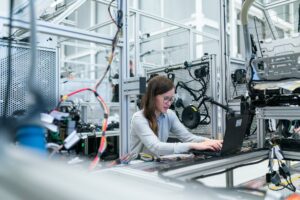
Introduction
The scientific method is a special approach to solve problems. It is a continuous process involving the six basic steps as outlined
These include problem, hypothesis, definite of terms, conducting a study (observation), analysis and conclusions. Although additional steps or an entirely different group of steps could be used, the mentioned above describe the basic a problem solving process often called the scientific method.
Steps
The first step of the scientific method is to identify the problem clearly and to as whether the scientific method can be used to answer the problem. For example, the scientific method cannot be used to determine whether slavery or freedom is better or whether sex education should be used in school curricula. The scientific method cannot deal with problems requiring moral judgments.
In the second step, a tentative solution to the problem, a hypothesis advanced. A hypothesis is formed by using all available information (such as other research and theories) to state a possible solution to the problem. The third step is to define all the terms as unambiguously as possible so that there is little question about what problem is being addressed. The fourth steps are to make observations relevant to the variables of interest that is to conduct the study this may require an extensive search of the research literature, detailed observations or an experiment in which all variables are carefully controlled. The particular procedures for conducting the observations are a function of the research methods being employed.
The fifth step of the scientific method is to analyses the data that are obtained from the observations. The particular method of analysis will depend on the nature of the data, the research methods used, the type of information that the research wants to obtain, and other considerations. Moreover, several forms of analysis may. be performed on the same data to assess different aspects of them. Scrutinizing the data carefully is critical to the scientific method.
In the scientific method, the final step is to draw conclusions by interpreting the data collected. James R. Craig and Leroy P. Metze (1986, PP. 14-15) stated that the researcher must address a series of questions to organize the facts in relation to one another before they can be used to understand and explain.
These questions include: –
- Do the data relate to the research problem originally posed?
- What do the data indicate the variable relationships are?
- Can the data interpretations be generalized to other people or situations?
- Does a theory need to be revised or a new one created to take into account the interpretation of the data?
- What further research is suggested by the data interpretations?
If a researcher cannot answer any or all of these questions, then the steps of the scientific method will probably have to be repeated. However, the effort has been made in this unit to highlight all such steps in detail.
“Which there is recognition that something is the matter that unsolved difficulties exist”?
According to Vockell, E.L (1983, p55), “The problem comes out of a situation Steps in the scientific method – Identification of the problem.
Each and every problem cannot be selected by each and every research worker. There are important considerations which must be kept in view by every worker. The following are the major considerations in identifying the problem.
Problem area
The problem area should be closely related to professional work. A student should attempt to develop his research problem in the area closely related to his professional goals. For example, a student who plans to teach in a higher secondary school will profit much more from a research project in some areas such as adolescent development, educational or vocational guidance, etc. This will better equip him for his professional work.
Significant problem
No educational research project should be undertaken unless its consequences give promise of improving significantly an important educational practice or operation. Facilities are available. In selecting a thesis, the research worker must reflect carefully on the availability of adequate books and journals in the library. Guidance facilities are available. In selecting a thesis, the research worker must also reflect on the availability and personality characteristics of the faculty member under whose guidance he will work.
Necessary competency
The research worker must keep in view the competence required to plan and carry out a study of his choice. He should be skillful enough to develop, administer, and interpret the necessary data-gathering devices and procedures. He should be well-grounded in the necessity of statistical techniques. Time factor. The time involved in completing the project should be taken into consideration.
Availability of the data
The researcher must make sure that necessary permission would be available to collect relevant data. Many research studies require special permission from school authorities; for example, to administer tests to pupils, to interview employees, to observe class teaching, to distribute questionnaires or to make Cak studies of pupils, etc. Risks and costs. V.Good has stated such risks and costs as in e selection and development of certain types of problems there sometimes special risks, penalties, handicaps, or costs of a physician.